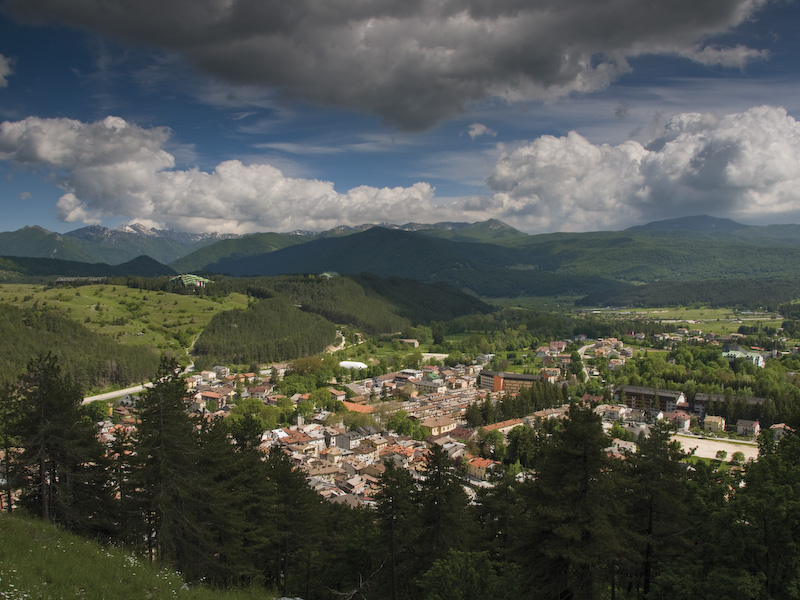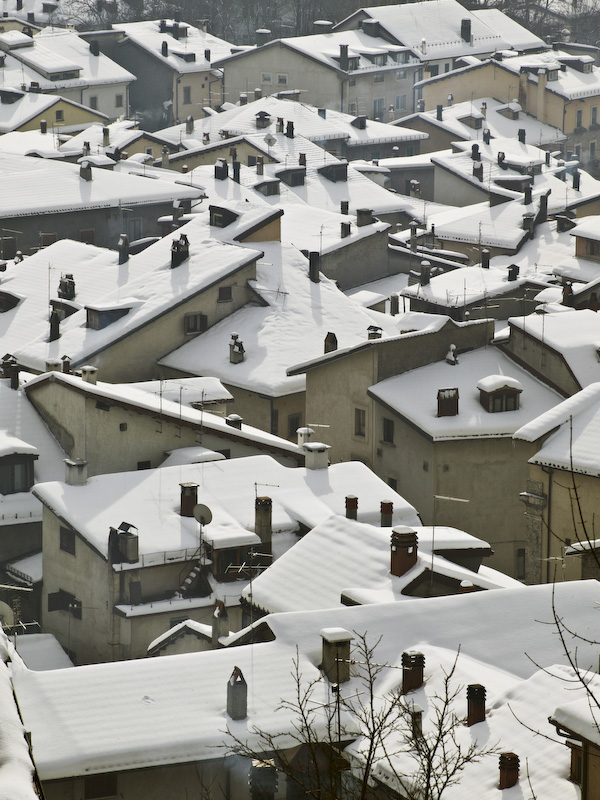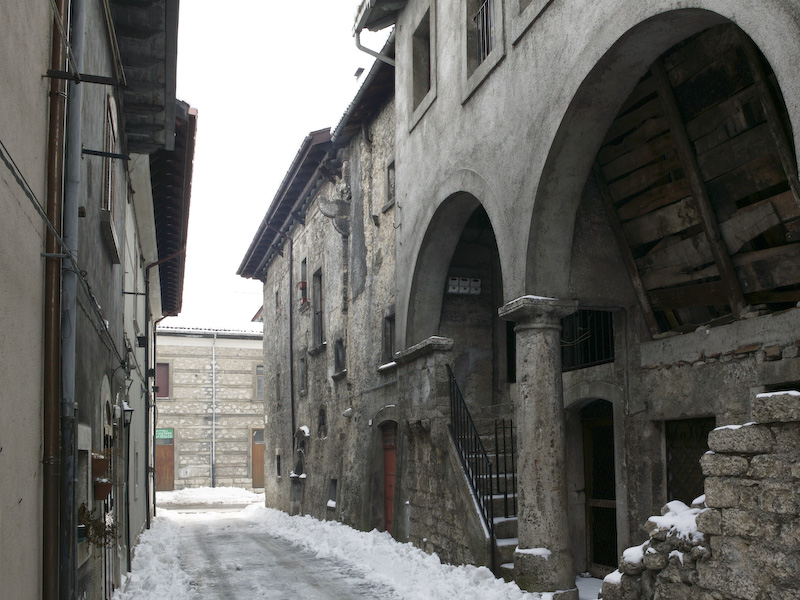Pescasseroli is set in a hollow at the entrance of the upper valley of the Sangro River, 1167 metres above sea level. Ancient woods and evocative mountains surround this upland rich in pastures. Symbiosis between nature and architecture is striking in Pescasseroli: the residential area is in perfect harmony with the surrounding natural beauties. The old town grew on flat ground around the ancient abbey, and features traditional stone buildings embellished by a peculiar type of window, whose jambs are cut in a local stone called "pietra gentile" from the mountain of the same name. Piazza Sant'Antonio, which owes its name to a church than no longer exists, is at the heart of town life: it is coloured by beech trees and scented by linden flowers, and is embellished by the town hall and by a pretty fountain with a statue of the Virgin on top.
- Population: 2,234
- Elevation: 1,167 m asl
Park centres
Visitor centre with information office, museum, projection hall, wildlife park, Garden of the Apennines and a space for education activities.
Walks and excursions
(Al) La Canala - Rif. Pratorosso: 1 h, Easy
(A2) Rif. Pratorosso - Terraegna: 1 h, Easy
(A3) Terraegna -Valico Carapale: 1.5 h, Difficult
(A4) Rif. Pratorosso - Vai. Campitello: 1 h, Medium
(A5) Rif. Pratorosso - La Cava: 1 h, Medium
(A6) Pratorosso - Monte Marsicano: 4 h, Medium
(B1) Vallone Pesco di lorio - Valico Aceretta: 1.5 h, Medium
(B2) Capo Vallebona - Sorg. Puzza: 2.5 h, Medium
(B4) Sorgenti - Rif. di lorio: 1 h, Medium
(B5) Valico Aceretta - Rif. di lorio: 1 h : Easy
(B6) Valico Aceretta - M.te Vitelle: 0.30 h , Easy
(C1) Bocca del Petroso-Strada Statale di Forca D'Acero: 3h, Easy
(C2) Curva Casale-Macchia la Rocca: 0.15h, Easy
(C3) Fonte della Difesa - M.te Tranquillo: 2.5 h, Medium
(C4) Camporotondo - Campo lungo: 40', Easy
(C5) Valico di Monte Tranquillo - Rif. di lorio: 2.5 h, Medium
(D1) Campeggio dell'Orso - Colli Alti: 2 h, Medium
(D2) Campeggio dell'Orso-Le Prata di Opi: 1h, Easy
(D4) Campeggio dell'Orso-Valle Mancina: 1.30h, Medium
(D3) Camp. Orso - Macchiarvana: 2.5 h, Medium
(D5) Portella - Camporotondo: 2 h, Medium
(D6) Pescasseroli - Colli Alti: 1.5 h, Medium
(BN1) Sentiero Natura Castel Mancino
Historic sites
Parish church of Santi Pietro e Paolo (year 1100); Palazzo Sipari (birthplace of philosopher Benedetto Croce)
Interesting facts and places
The name Pescasseroli probably comes from "Pesculum Serulae", i.e. steeply rising rock (from late latin "pensulum") or blocking boulder. According to Benedetto Croce, the origin of the name is "Pesculum ad Sorolum", i.e. boulder near the small Sangro River, that is, near the river spring. The most ancient part of the town is built at the foot of a rocky spur ("pesco") on which the remains of Castel Mancino are to be seen. The shepherd poet Cesidio Gentile, in his "Leggenda Marsicana", describes the foundation of Pescasseroli following the tragic story of a young crusader knight, Serolo. He was the son of Count Maracino, lord of the castle. During the First Crusade in Palestine, Serolo falls in love with the beautiful Saracen lady Pesca, and marries her. The lady travels to Serolo's castle accompanied by a blessed anchorite, who had the wooden statue of the Black Virgin with him. Once at the castle, the old Count takes an unreturned fancy to the lady, who escapes him, but is then caught and killed near a spring which, from then on, is called "Malafede" (bad faith). When Serolo comes back from the Crusade and finds out what happened, he dies from sorrow. The old Count, to expiate his sins, founds a town on the tomb of the two young spouses and calls it Pescasseroli, from the union of their names.
Celebrations
SS. Pietro e Paolo (June, 29th and 30th); Madonna del Carmelo (July, 15th and16th); Madonna di Monte Tranquillo (last Sunday of July); Madonna Incoronata (September, 8th and 9th).
Traditions
It is an ancient custom to toast chickpeas and flavour them with sand before a wedding.
The traditional costume of Pescasseroli women is entirely black. This costume was introduced in relatively recent times, whereas the older one was bright and rich. The black costume was introduced quite by chance: tradition has it that in 1846 some women from Pescasseroli went to Ischia for hot spring treatments and, while in Naples, they were object of indiscreet attention. They thus took refuge in Procida and swapped their clothes with those of local women. Upon their return home, the new costumes were so appreciated, that all the women adopted them.
Gastronomy
Agnello al cotturo (stewed lamb meat), patate maritate, trcnell (fried Christmas sweet), la P'plla (typical Easter sweet).

Pescasseroli
(photo by: Valentino Mastrella, Archivio PNALM)

Pescasseroli
(photo by: Valentino Mastrella, Archivio PNALM)

Pescasseroli
(photo by: Valentino Mastrella, Archivio PNALM)